In an era where smartphones are central to modern life, “battery anxiety” has become a universal challenge. Power bank sharing, a standout innovation in the sharing economy, was born from this need and has achieved global success. It not only solves the urgent problem of users’ phones running out of battery in public places but has also cultivated a massive, multi-billion dollar market. This article will delve into the business model of power bank sharing applications and provide a comprehensive, professional review of the 8 most representative apps on the market in 2026, helping you gain insight into the industry landscape and future trends.
The Business Model Canvas for Power Bank Sharing Apps
The success of the power bank sharing business is built on a meticulously designed and replicable business model. We can systematically understand its operational logic through the nine dimensions of the Business Model Canvas.
Key Partners
The operation of power bank sharing companies relies on an extensive network of offline partnerships. They collaborate with high-traffic venues such as local festivals, airports, shopping malls, hospitals, cafes, restaurants, and bars to deploy their devices. Additionally, partnerships with banks and payment institutions to process transactions, and with hardware manufacturers and industrial design firms to produce power banks and stations, are crucial.
Key Activities
Core business activities include marketing and brand promotion to attract users and merchants, efficient supply chain management to ensure the production and deployment of devices, and refined daily operations, including device maintenance, recharging, and dispatching.
Key Resources
A successful power bank sharing business requires strong brand equity, continuous market research, effective promotional materials, an online location map with real-time station status, a security system to ensure device and payment safety, and a fully functional official website and mobile app.
Value Proposition
Its core value proposition is clear: to enable people to rent fully charged power banks from charging stations anytime, anywhere, solving the problem of their phones dying in public places where power outlets are unavailable.
It solves the frustration users face when their battery dies in public places, which often lack accessible power outlets.
Customer Relationships
To maintain and expand their user base, companies must ensure that power banks are always fully charged and enhance user stickiness through promotional activities (like the first hour free) and prompt customer service (via online chat, chatbots, and help hotlines).
Channels
Power bank sharing companies reach and acquire customers through their official websites, social media platforms (like WeChat, Facebook), and offline public venues scattered throughout the city.
Cost Structure
The most significant costs in this business model include: hardware procurement costs for power banks and stations, venue partnership fees or revenue sharing, device maintenance and depreciation, customer service team costs, application development and iteration, and ongoing marketing expenses.
Revenue Streams
The primary revenue streams are diversified, including: power bank rental fees charged by the hour or by usage, membership plans and subscription fees designed for high-frequency users, and additional fees or direct purchase charges when a power bank is not returned or is overdue.
In-Depth Analysis of the 8 Best Power Bank Sharing Apps
Now that we understand the business model, let’s take a closer look at the 8 top-performing players in the market. They each have their own unique strengths in terms of geographical coverage, technological features, and pricing strategies.
#1 ChargedUp
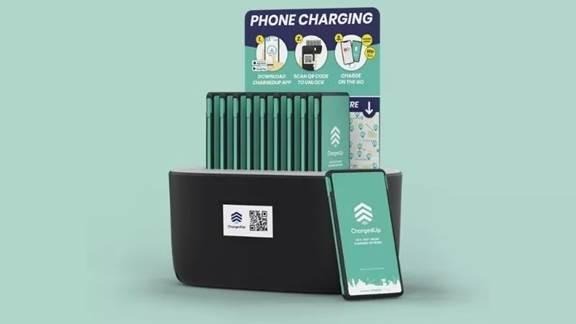
Company Background
ChargedUp is a UK-based startup dedicated to building a sustainable mobile charging network. Its founders, Hugo Tillmouth, Charlie Baron, Hakeem Buge, and Forrest Skerman Stevenson, drew inspiration from the bike-sharing model and secured an initial investment of £1.2 million. Today, ChargedUp has over 2,000 charging stations across Europe and emphasizes that all its operations are powered by 100% renewable energy.
How to Use
Users need to download the ChargedUp app, register an account with a valid mobile number, and enter an SMS verification code. A power bank can be unlocked by scanning the QR code on the charging station. The power bank comes with built-in cables for all major phone models (Lightning, USB-C, Micro-USB), allowing users to charge on the go.
Pricing Model
ChargedUp offers two flexible billing options:
- Pay-as-you-go: Billed by the hour. After 5 hours of use, the rest of the day is free.
- Daily Pass: Pay a flat fee for a full day of unlimited use.
An in-app timer displays real-time rental cost information, ensuring transparent spending.
#2 RedShare

Company Background
RedShare is a New York City-based company focused on providing convenient smartphone charging services for people in the fast-paced metropolis. Its goal is to free users from the hassle of charging their phones, offering fast and reliable power replenishment anytime, anywhere.
How to Use
Users can rent a power bank by downloading its iOS or Android app, or by using WeChat or Alipay mini-programs. The process is extremely simple: scan the QR code on the RedShare station’s screen, and a fully charged power bank will pop out. After use, it can be returned to any RedShare station within New York City.
Core Features and Pricing
RedShare’s power banks feature advanced FastCharge technology, capable of fully charging a smartphone in about an hour. The rental period begins 5 minutes after the power bank is taken and is billed by the hour (rounded up). The maximum daily charge varies by location. After 24 hours, a small daily rental fee (including tax) is charged. If a power bank is not returned after 3 days, it is considered purchased, and the user’s credit card will be charged $35 (plus tax).
#3 Powerqube

Company Background
Powerqube is another popular power bank sharing service provider across the United States. It is known for its exceptional safety and high quality, allowing users to rent and return power banks at any Powerqube station nationwide.
Core Features: Safety and Eco-Friendliness
The biggest differentiator for Powerqube is its ultimate pursuit of safety. Its charging stations and chargers are made from UL 94 V-0 grade flame-retardant materials to ensure the highest level of safety. Furthermore, its products meet stringent US, European, and Japanese safety standards, with battery cells produced by the world’s top lithium-ion battery manufacturers that supply renowned brands like LG Chem, Panasonic, and Lenovo.
Powerqube’s stations and chargers are made of UL 94 V-0 grade flame-retardant material to ensure the highest level of safety.
In terms of environmental protection, Powerqube’s chargers are recycled after more than 800 rental cycles to reduce their environmental impact.
#4 Qelnix
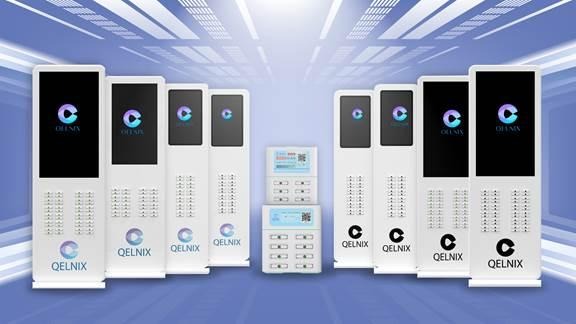
Company Background and Market Positioning
QELNIX is an innovation-driven technology company headquartered in Malaysia with a global vision. It focuses on intelligent shared charging networks that combine advanced fast-charging technology and data-driven management. Targeting business professionals, travelers, and young consumers, QELNIX aims to become a technological benchmark in smart energy sharing.
Core Technological Innovations
- AI-Powered Smart Dispatch System:
By analyzing historical data and real-time foot traffic, QELNIX’s AI algorithm predicts charging demand in different areas and dynamically allocates power banks, minimizing “no unit to rent” or “no slot to return” situations. - Next-Generation Fast Charging:
Supports mainstream fast-charging protocols, capable of fully charging most devices within an hour. - IoT Integration:
All power banks and stations are connected to the cloud via 5G or LoRaWAN networks, enabling real-time monitoring and remote management. - Biometric Security Unlock:
High-end stations feature fingerprint or facial recognition unlocking for a safer and more convenient experience.
Business Model and Pricing Strategy
QELNIX adopts a flexible shared-economy model.
Partners can join with zero upfront cost, gain from advertising and data services, while users enjoy affordable and accessible charging through time-based or membership options.
Service Scope and User Experience
QELNIX’s network continues expanding across major cities, offering fast, secure, and reliable charging.
Its app provides a clean interface — users can find, rent, return, and pay within 30 seconds — reflecting QELNIX’s commitment to efficiency and user satisfaction.
#5 CoCharge

Company Background
CoCharge is another power bank sharing company operating in New York City, attracting users with its cost-effective charging solutions. Users can rent a power bank for about $1 per hour, roam freely around the city, and return it to any station in the network at their convenience.
Pricing Model: Membership is a Highlight
Unlike many pay-per-use services, a key feature of CoCharge is its monthly membership option. Its pricing structure is as follows:
Short-term Hour Packs: $1/hour (rounded up to the nearest hour) or $9/10 hours.
Monthly Membership: During the membership period, users can use power banks for unlimited sessions and duration.
It is important to note that if a power bank is lost for more than 48 hours, the renter’;s account will be charged a fee of $30 (plus tax). Additionally, failing to return a power bank within 48 hours will result in the forfeiture of any short-term hour packs on the account.
#6 PowerNow
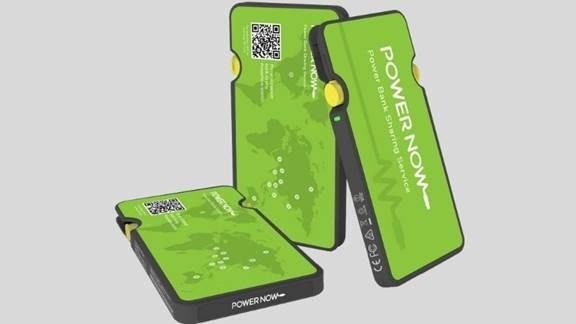
Company Background
PowerNow is a leading mobile charging service provider in Asia, specializing in providing charging solutions in venues such as shopping malls, transportation hubs, restaurants, entertainment venues, tourist attractions, and large exhibitions. Its station designs are diverse and can be flexibly adapted to various spaces, from front desks to lobbies.
Core Features
PowerNow utilizes human-computer interaction technology to offer a fully self-service rental experience, helping merchants enhance their value-added service capabilities. At the same time, it is committed to improving user experience, increasing service efficiency, and reducing manual operational costs. Its power banks are designed to be ultra-slim and portable, fitting easily into a pocket. With tens of thousands of stations worldwide, PowerNow has built a vast and convenient charging network.
#7 Plugo
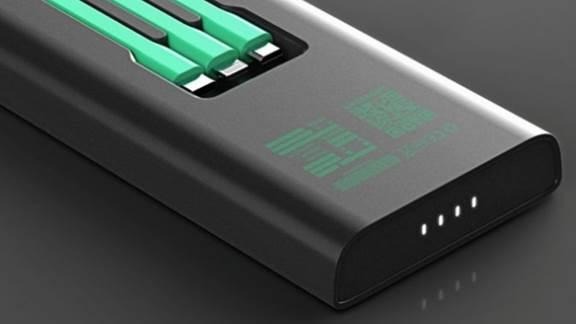
Company Background
Plugo is an intelligent, fully automated power bank sharing service provider in Asia. It offers users a network of internet-connected charging terminals, and users can check the device status in real-time within the Plugo app. The service also integrates a one-click rental and payment system and requires users to pay a refundable deposit.
Membership Plans
Plugo offers two membership plans:
Basic Membership: Pay-per-use after paying a refundable deposit. It supports various payment methods, including major credit cards, debit cards, online banking, mobile wallets, and UPI, and features a referral program.
Premium Membership: Users can choose to pay quarterly or annually to enjoy unlimited power bank swaps. Premium members also receive free coupons from partner merchants.
#8 Naki Power
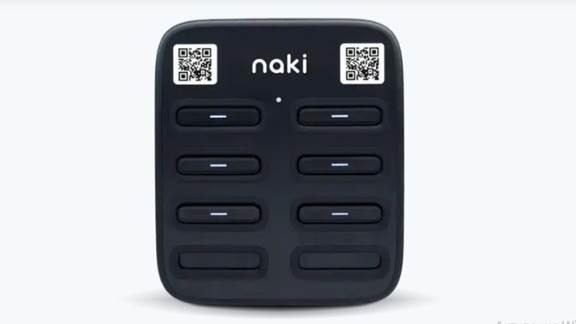
Company Background
Naki Power is a large European power bank sharing company with hundreds of charging stations in major cities like Paris, Berlin, Brussels, Munich, and Madrid.
Pricing and Payment
Naki Power’s pricing is straightforward: €0.50 per 30 minutes, with a maximum daily charge of €6. If a power bank is not returned within 5 days, it is considered purchased, and the user will be charged €30. To encourage usage, some partner merchants may offer free usage time or discounts.
Payment is very convenient. Users can configure Apple Pay, Google Pay, credit cards (Visa or Mastercard), and PayPal in the Naki app. At the start of a rental, a pre-authorization is placed on the user’s payment method (€14.90 for credit cards, €30.00 for PayPal) to ensure sufficient funds. After the rental ends, only the actual cost is deducted.
Comparative Analysis of the Eight Major Apps
To compare these leading applications more intuitively, we have compiled the following table summarizing their differences across key dimensions.
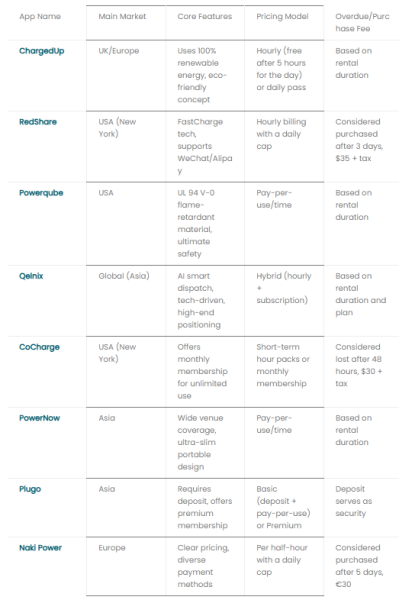
Note: Data is compiled from public information. Specific fees may be adjusted based on region and time. Please refer to the in-app information for accuracy.
Development Challenges and Experiences for Power Bank Sharing Solutions
Developing a successful power bank sharing system is much more than just creating an app. It is a complex Internet of Things (IoT) project involving deep integration of hardware, software, and operations. Based on industry experience, developers typically face the following challenges:
- Hardware Integration and Communication: Ensuring the mobile app can communicate stably with charging station hardware of different models and from different manufacturers to handle commands like unlocking, locking, and status reporting is the most fundamental and critical challenge.
- Payment System Integration: This requires integrating multiple payment gateways (e.g., credit cards, PayPal, Apple Pay) and handling complex billing logic, including pre-authorizations, time-based deductions, daily caps, deposit processing, and refunds.
- Real-Time Map and Status Updates: Providing users with an accurate, real-time map of charging stations showing the number of available devices and empty slots at each location requires efficient backend services and data synchronization mechanisms.
- Incentivizing Returns and Anti-Loss Strategies: Designing reasonable billing and deposit strategies, and encouraging users to return power banks promptly through in-app reminders, credit scores, and other mechanisms, is key to reducing hardware loss and ensuring the business’s healthy development.
During the development of our power bank sharing project, we overcame challenges such as making charging station hardware work in synergy and encouraging people to return lost chargers.
An experienced development team usually starts by defining a Minimum Viable Product (MVP), prioritizing the core rent-return-pay cycle. They then iterate quickly on this foundation, gradually adding advanced features like membership systems, promotional activities, and smart dispatching to ensure the project can be launched quickly and optimized based on user feedback.
Conclusion: Intelligence and Refinement are the Future Trends for 2026
The power bank sharing market has moved from its early stage of rapid, unregulated growth to a new phase driven by refined operations and technology. As we look towards 2026, the analysis of the 8 apps above reveals several clear trends: First, technological innovation has become a core competency, with AI-powered smart dispatching, represented by Qelnix, leading the industry’s development. Second, pricing models are becoming more flexible and diverse, shifting from single hourly rates to hybrid models like memberships and packages to meet the needs of different user groups. Third, safety and environmental protection are gaining importance, with high-standard materials and sustainable operational philosophies becoming significant brand assets. In the future, platforms that can provide smarter, safer, and more convenient services will ultimately win out in the fierce market competition.
For more details, please refer to the original article published by Index Investing News: https://indexinvestingnews.com/in-depth-review-of-the-top-8-power-bank-sharing-apps-in-2026-business-model-analysis/
Media Contact
Company: QELNIX
Contact: Waldo Swiegers
Email: contact@qelnix.co
Website: https://www.qelnix.co
City: Kuala Lumpur
Country: Malaysia

